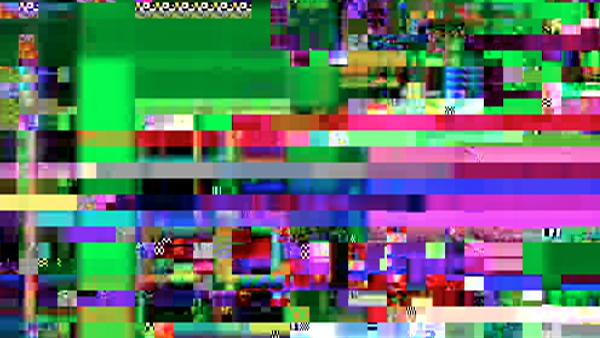PORTFOLIO |
 |
|
|
|
|
|
 |
 |
Defining the Critical Glitch
story © Michael Betancourt | published December 17, 2015 | permalink |



 |
| 
|
 |


|
 |

�Glitch� may be best known from its role in electonic music and digital composition, but it is equally�and more commonly�a part of the everyday visual engagement with computers. The technical aspects of digital technology�pixellated images that re/compose reality as a juxtaposition of discrete fragments�suggests a translation of visual space into a virtuality, cyberspace, that instead of being continuous is instead shot through with errors and failures of various types. Transfers between this digital technology and art have been a continuous part of its history, but the prominence of digtial imagery and digitally-derived forms has become an insistent part of contemporary media since the opoular embrace of the Internet in the mid-1990s. These visual forms of glitch, unlike its musical counterparts, have consistently been grouped with a variety of other terms, prominent among these are post-digital, post-internet and the new aesthetic; in academic contexts visual glitch will often simply identified with new media art, or occasionally video art.
|

|
|
read more (1823 words)
|

|
| |

|
| |
 |
Glitch Procedures in Helios | Divine (2013)
story © Michael Betancourt | published December 3, 2015 | permalink |



 |
| 
|
 |


|
 |
|
The music video produced for Sa�eed Ali�s song of the same title, Helios | Divine is 4 minutes long, organized into four sections of approximately equal length. It is designed to act as a �posthuman landscape� where what we believe we see is not entirely the same as what is actually visible on screen: a complex network of squares and rectangles that �twinkle� and contain a continually shifting field of colors that combine into larger blocks only to break into smaller, more discrete units. The imagery presented is emergent�what can be seen when looking at a still image is radically different than the encounter with the movie�but is also composed from uniform squares of color, an effect of the glitching process that stripped recognizable, high definition imagery from the �raw� footage. This visual development follows the sequence of imagery common to the revelatory experiences described in the 1930s by German psychologist Heinrich Kl�ver. A summary of his imagery describes the progression of Helios | Divine: in a continuously transforming shot (rather than a series of individual, discrete shots), the initial �parting of the veil,� becomes by degrees a beautiful landscape, then a figure that merges into a large, circular disk with light rays stretching out, followed by a second, darker landscape.
|

|
|
read more (937 words)
|

|
| |

|
| |
|
|
|